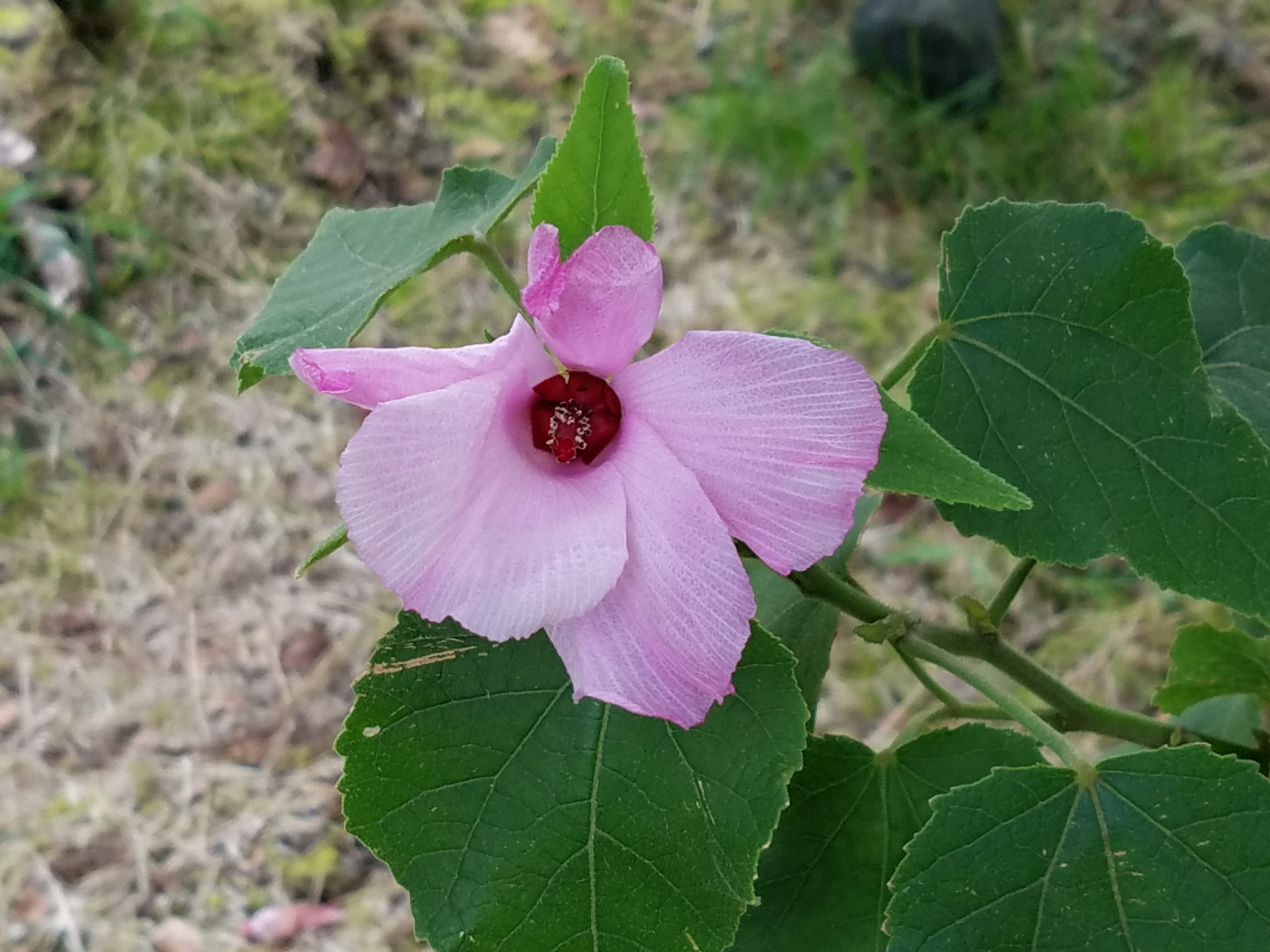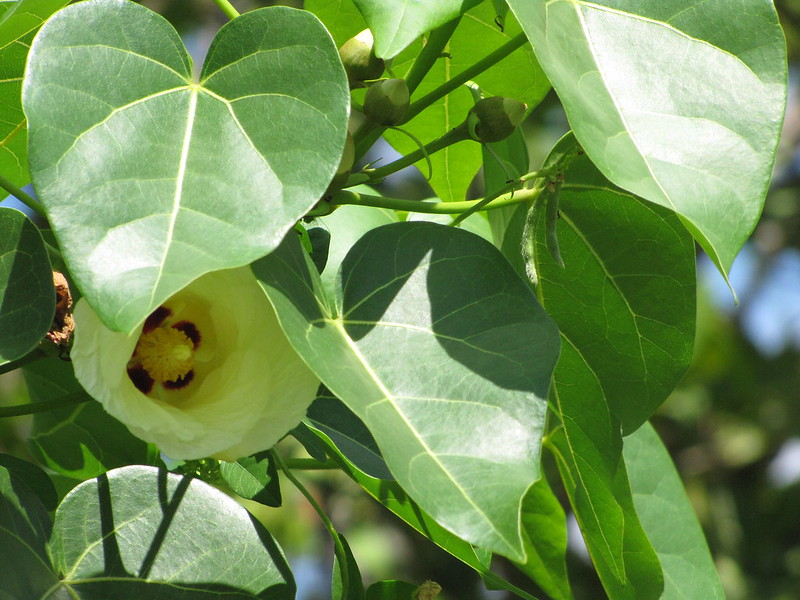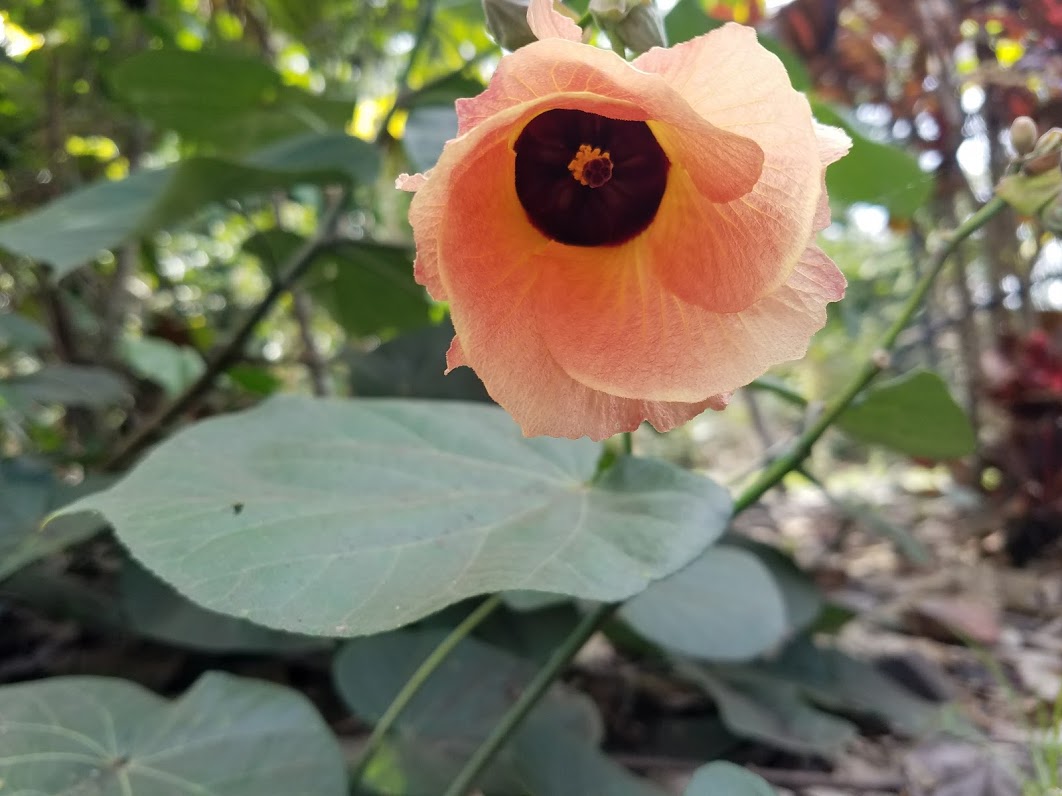History
Commonly known as hau, Hibiscus tiliaceus has an extensive native range encompassing both the Pacific and Indian Ocean areas. Hau is likely an indigenous plant, although evidence supporting this theory is obscure. The tree is adapted for ocean dispersal and grows well in the salt spray. Seeds remain viable after several months in saltwater. It is quite possible that propagules arrived on Hawaiian shores unaided by humans. Most agree that hau is both indigenous and a Polynesian introduction.
This tree was crucial for the survival of early Hawaiians. From Oceania to Southern Asia to Hawaii, hau was highly prized. Permission had to be granted by the chief before harvesting. The light wood was used for outriggers, adz, spear handles, fishing floats, and for starting fires (alongside olomea). The inner bark was processed to make cordage, fishnets, sandals, and kapa. Grass pāʻū hula (hula skirts) are traditionally made from hau fibers. All parts of the plant were used medicinally.
Modern Uses
Today, hau is not just a plant of historical significance, but also a valuable resource in modern times. Grown for its ornamental value, hau has many other applications. Practitioners still use it for cordage and kapa. Windbreaks, erosion control, shade, woodworking, and living fence material are some of today’s uses. It thrives along rivers, streams, and the ocean shore. The branches often grow horizontally, creating impenetrable thickets. This wild species can be weedy but is also excellent for erosion control. A ‘honey plant’, hau gives pollinators plenty of fodder. Insects can be seen imbibing the sweet liquid secreted from the extrafloral nectaries located at the base of the leaf. Ornamental varieties are fast-growing but tame.
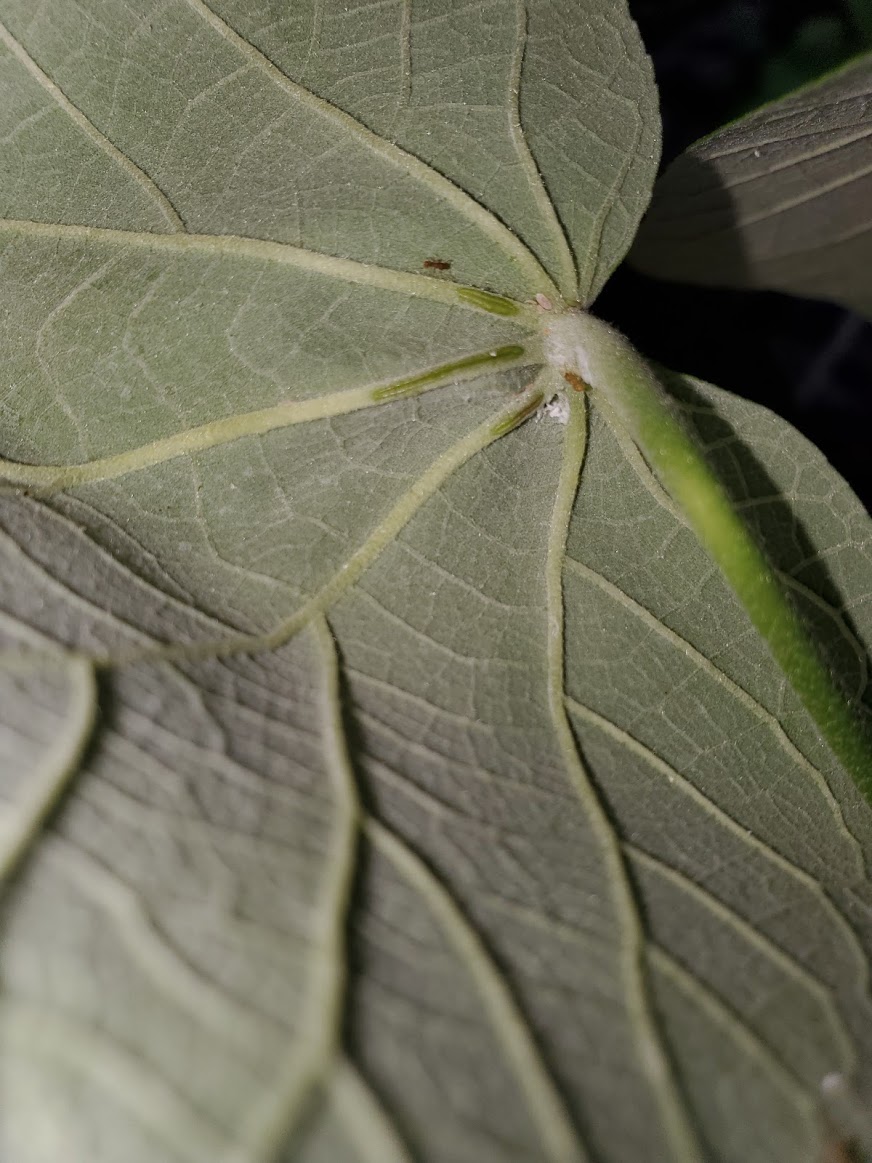
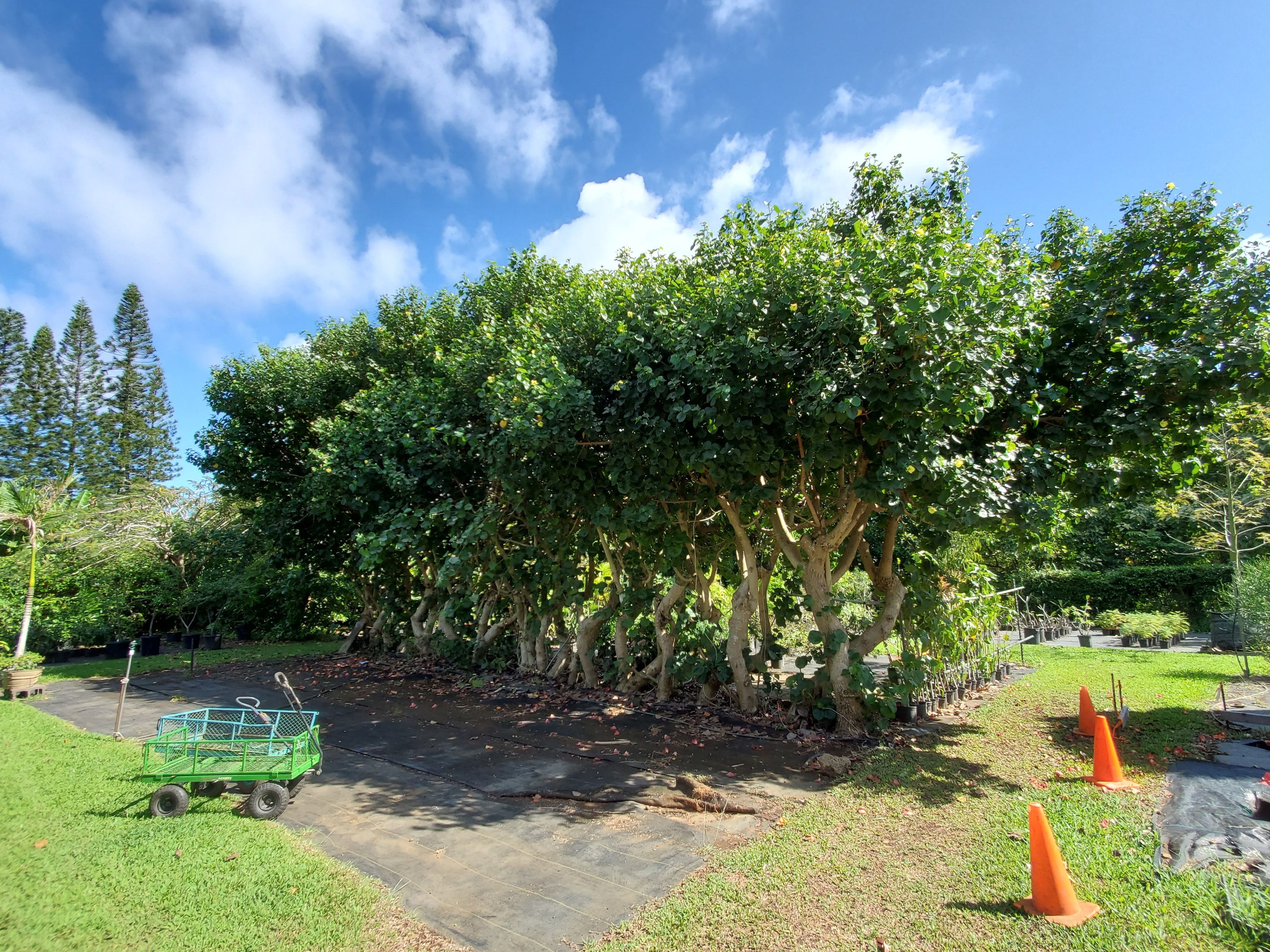
Other Varieties
Variegated varieties like rainbow hau (aka tri-colored hibiscus) and ‘Rubra’ are cultivated more for their stunning foliage than their flowers. Both are widely planted throughout Hawaii as a landscape tree. This ornamental hau grows into a dense canopy of heart-shaped leaves. It makes a perfect hedge and privacy screening that is splashed with color. Compact varieties have smaller leaves, are green in color, and have a dense canopy when compared to the wild type. All varieties are evergreen and will flower throughout the year. Both the compact and variegated varieties are much less weedy than the wild type. However, Hau is not a ‘utility-friendly’ plant. Trimming will be necessary to maintain shape and to produce dense growth. The excess trimmings are perfect as green mulch.
Variegated hau is excellent for bonsai. Cut your potted tree back severely once a month. A vigorous producer, hau leaves grow back fast. It will need frequent transplanting during this stage. With time, the trunk will grow fat while the leaves become smaller. After this occurs, trim and train into the desired bonsai shape. Once the correct structure is attained, transplanting will not be necessary.
All three varieties will grow in a wide range of environments. They can take the high winds of Hāwī, the hot air of lowland Kona, and the dark skies of Puna. The variegated forms can lose their color at higher elevations.
Propagation
Both the variegated and compact hau are extremely easy to clone. This method of reproduction ensures desirable traits, such as the color pattern of the leaves, will be passed along to their progeny. The ease of propagation makes hau a plant that anyone can grow and enjoy.
Cut a growing tip less than 2 inches in diameter, ensuring some nodes (the part of a plant stem from which one or more leaves emerge, often forming a slight swelling or knob) are on the stem. This is where the roots will develop. Bury a few nodes in moist soil, trim the bottom leaves, and cut the upper leaves in half. Keep it watered and out of the sun. Rooting takes place within a few weeks. Vitamin B and rooting hormones are helpful but not necessary. Seeds from the wild variety will sprout within 2 weeks.
After transplanting water every day until they are established, new growth is a good indication that the plant has survived the shock of being transplanted.
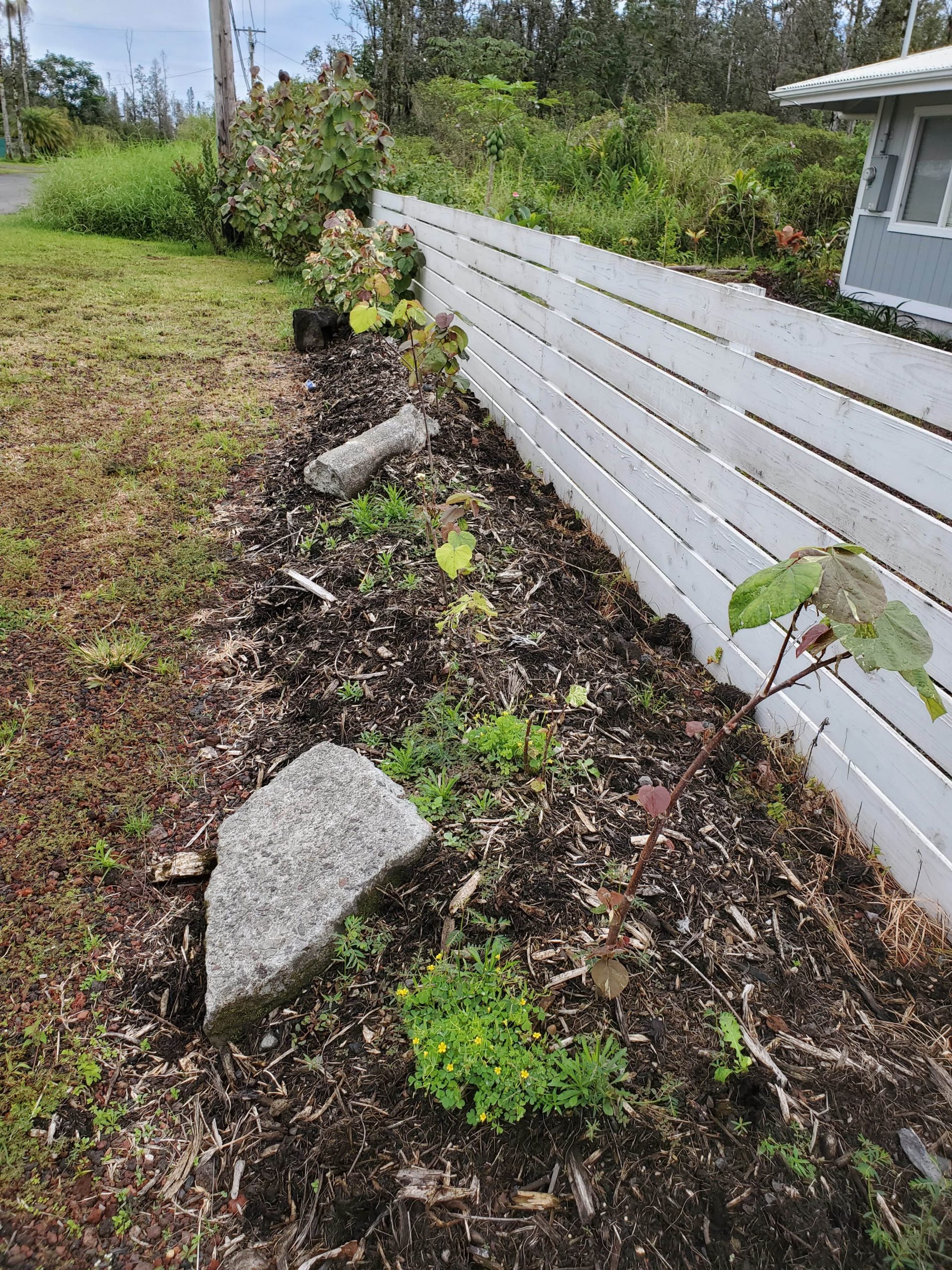
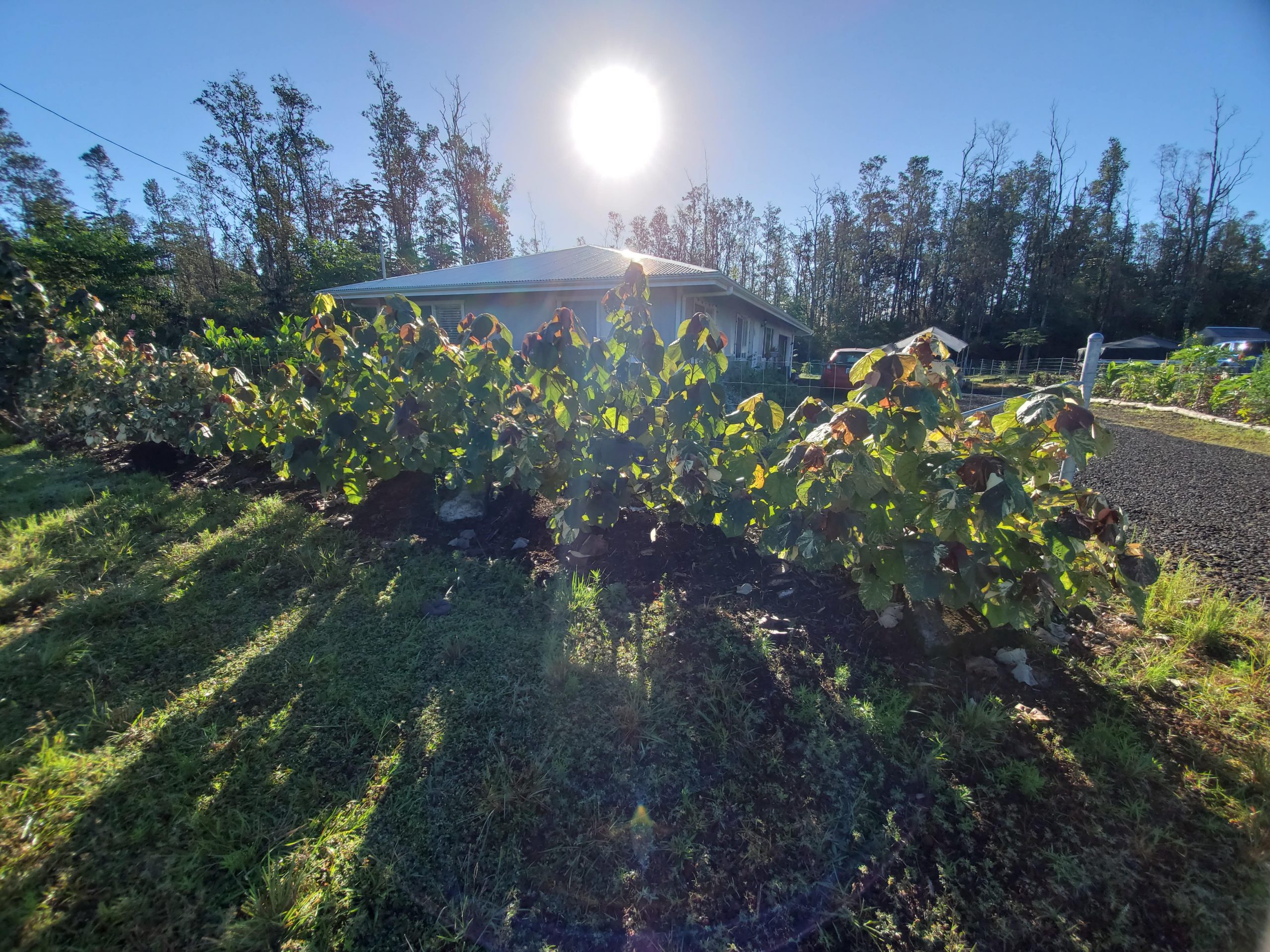
Where to find it
It is so easy to propagate by cutting. Asking a friend or a neighbor is an exciting source. Plus, the plants grown will have a lovely origin story connected to the friend or neighbor who provided the source material.
To purchase a rooted plant:
- Aikane Nursery in Hāwī
- Ili Kupono Gardens in Kailua-Kona
- Tropical Edibles in South Kona
- Dez from Niu loa Hiki Nursery in Nāʻālehu
Look Alikes
A cousin to common hibiscus and native hau hele, hau flowers are very similar in appearance. One huge difference is that hau flowers are not as showy, and they perish much sooner than common hibiscus flowers. Hau flowers last only 1 day, opening yellow in the morning, slowly wilting, and turning darker as the day progresses. Another look-alike cousin is Milo, botanically known as Thespesia populnea. They both have heart-shaped leaves and grow near the ocean. Milo flowers are more widely opened, and they have a more colorful center.
